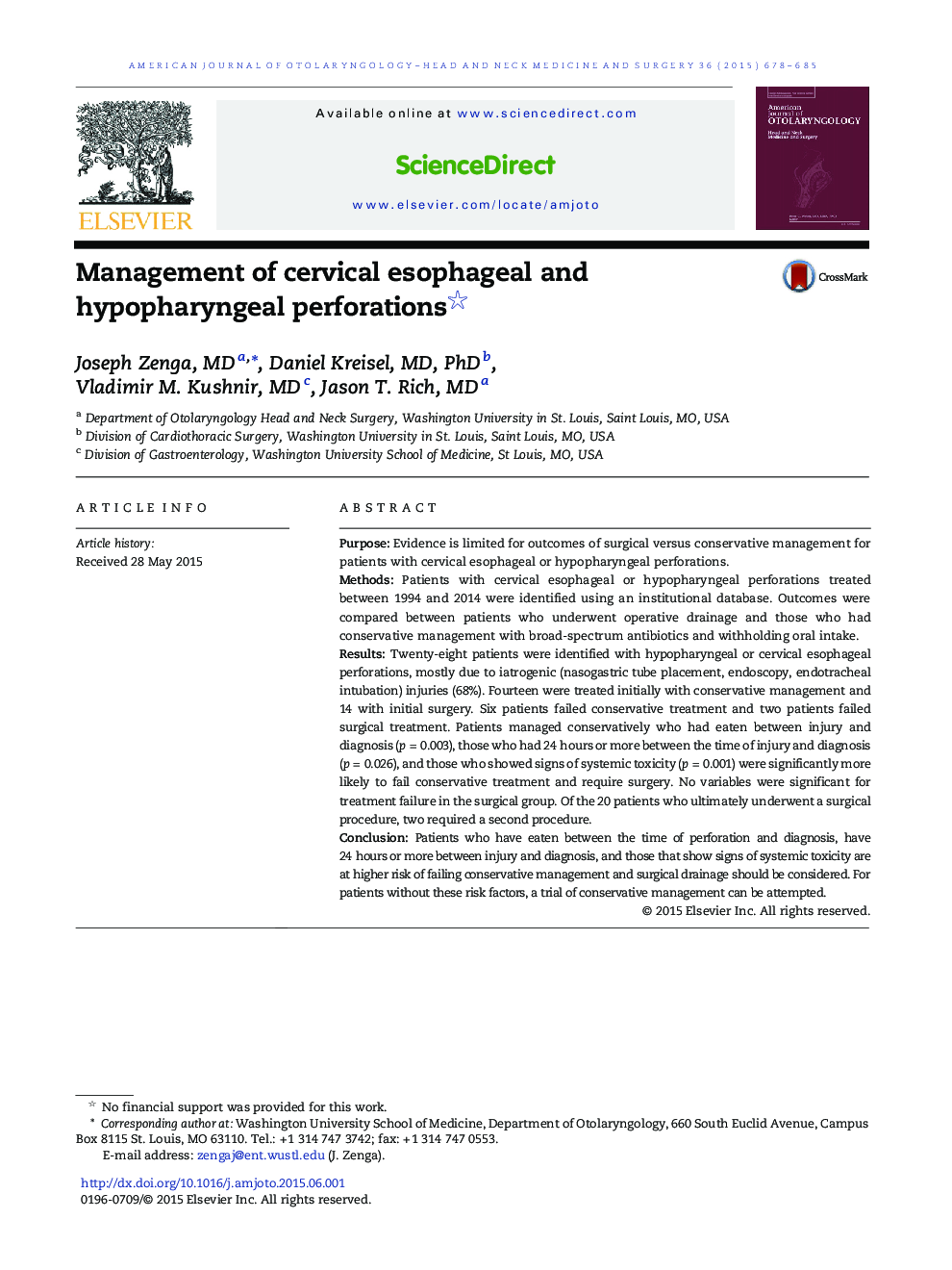| Article ID | Journal | Published Year | Pages | File Type |
|---|---|---|---|---|
| 4103062 | American Journal of Otolaryngology | 2015 | 8 Pages |
PurposeEvidence is limited for outcomes of surgical versus conservative management for patients with cervical esophageal or hypopharyngeal perforations.MethodsPatients with cervical esophageal or hypopharyngeal perforations treated between 1994 and 2014 were identified using an institutional database. Outcomes were compared between patients who underwent operative drainage and those who had conservative management with broad-spectrum antibiotics and withholding oral intake.ResultsTwenty-eight patients were identified with hypopharyngeal or cervical esophageal perforations, mostly due to iatrogenic (nasogastric tube placement, endoscopy, endotracheal intubation) injuries (68%). Fourteen were treated initially with conservative management and 14 with initial surgery. Six patients failed conservative treatment and two patients failed surgical treatment. Patients managed conservatively who had eaten between injury and diagnosis (p = 0.003), those who had 24 hours or more between the time of injury and diagnosis (p = 0.026), and those who showed signs of systemic toxicity (p = 0.001) were significantly more likely to fail conservative treatment and require surgery. No variables were significant for treatment failure in the surgical group. Of the 20 patients who ultimately underwent a surgical procedure, two required a second procedure.ConclusionPatients who have eaten between the time of perforation and diagnosis, have 24 hours or more between injury and diagnosis, and those that show signs of systemic toxicity are at higher risk of failing conservative management and surgical drainage should be considered. For patients without these risk factors, a trial of conservative management can be attempted.
